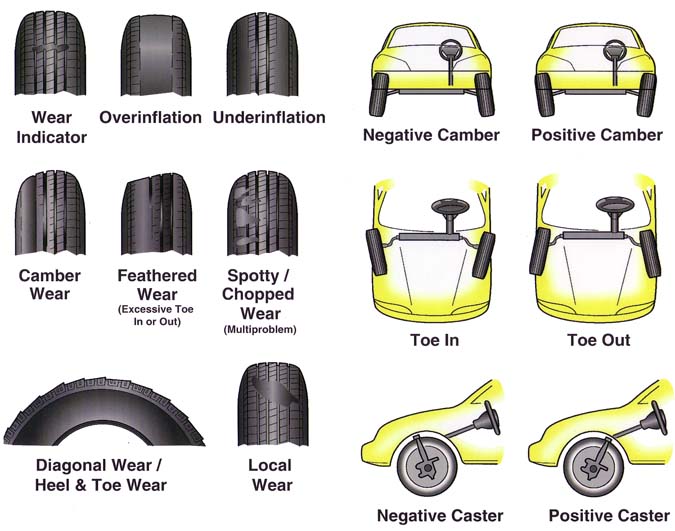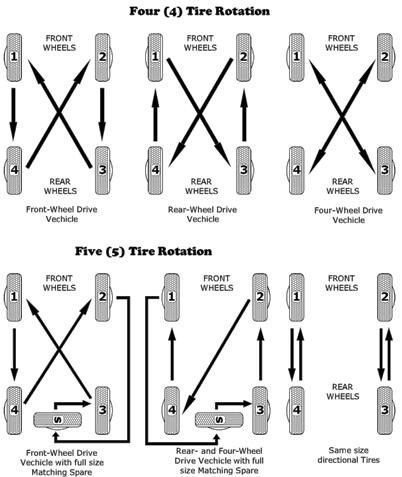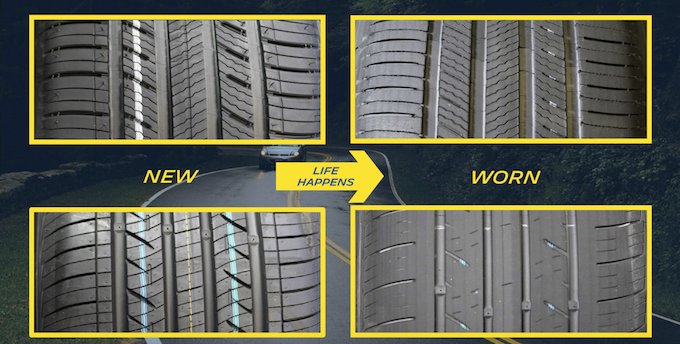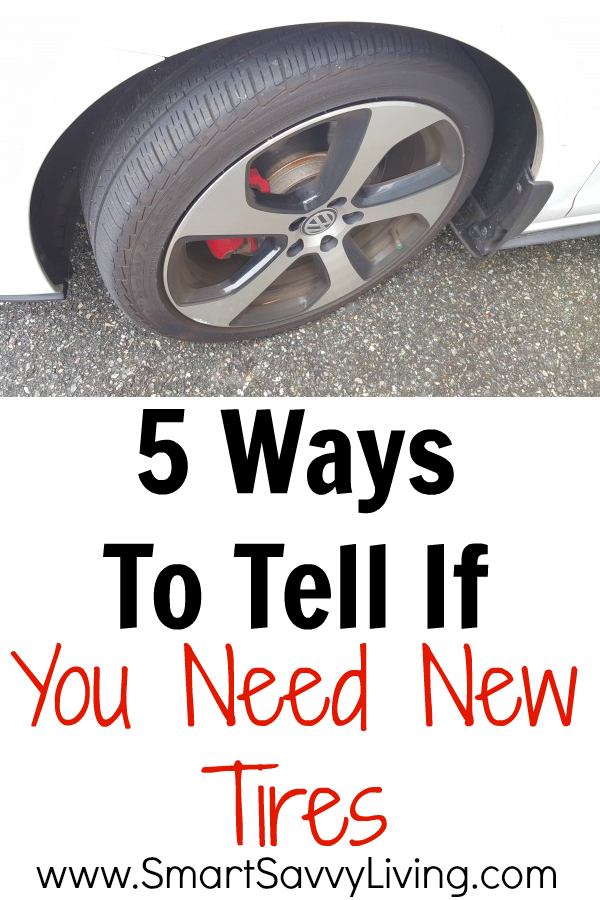Have you ever asked yourself this question: "How do I check the tire pressure without a gauge?"
If yes, then look no further!
This article will reveal seven practical ways of checking the pressure of your tires when you do not have a gauge at hand.
Also, you will know how often you should check your tire pressure, when to tell if your tires are underinflated, and many more.
Why Do You Need To Check Tire Pressure?To Prevent AccidentsLow tire pressure causes the rapid loss of tire tread depth in less time than usual. This is because the tires endure more weight and force than when they are correctly inflated. Underinflated tires may also cause poor handling of the car.
Overinflated tires can lead to a blowout during a ride. Regular pressure checks prevent accidents caused by blowouts and poor maneuverability of the car.
To Improve Fuel EconomyTire pressure checks enhance the fuel economy of your car. Low-pressure tires require more propelling power to get going. This indicates that your vehicle will burn extra fuel to supply the energy needed to move your underinflated tires. So you may notice that you're purchasing gas more often than you should.
Underinflated tires carry the weight of your vehicle more than the other adequately inflated tires. If the tire pressure is too low, too much of that tire's surface area touches the road, which increases friction. Increased traction may cause the tire to overheat, which can lead to premature wear. Regular checks ensure the uniformity of tire wear.
How To Check Tire Pressure Without GaugePound-force Per Square Inch Check (PSI Check)The pound-force/square inch is the unit used to measure air pressure in your tire. It lets you know how much inflation pressure your tire can withstand. The driver's manual usually provides this information. You may also notice it on the driver's side of the doors.
You may also notice it on the driver's side of the doors.
The number usually suggests the lowest pound-force per square inch at which the tire must be inflated. But you may vary it as you think necessary.
The more the vehicle can carry, the more pressure is needed for proper functioning. The suggested PSI for small cars like minivans and sedans ranges between 27 and 32. But those tires can reach 40 if necessity demands so. SUVs and trucks have a PSI of about 45 and more because their tires need more inflation pressure to carry the vehicle's weight properly.
Take note that some models of pickup trucks have different PSI for the front and rear tires. Check your manual to be sure.
Thumb CheckYou can use your thumb to check the pressure of your tire. All you have to do is push your thumb down on the tire to feel the pressure. Underinflated tires will be soft. You will find your tires to be extremely stiff if they are overinflated. The tire pressure is proper if your tire is not too soft or too stiff as mentioned above.
This method is based on checking the level of deformity of the tire once you mount weight on your tires. What you do is to put weight on the tires, and then notice the level of deformity of the tire. Tires with low pressure get deformed by 10% - 15% change. If you see that much difference, you need to inflate your tires a little more. As you add pressure, check gradually to see that the tires do not become extremely stiff.
Trail Comparison CheckFor this method, you need a pavement or a road with a flat surface. You need to apply ink or some other marking substance to your tires. After that, make marks on the road by driving the car slightly. After the drive, pay attention to the trail that your tires made. A comparison of the trail will reveal some differences. Low-pressure tires tend to leave a streak when compared with others.
Inflate the underinflated tires a little more and repeat the test until the moderate pressure is reached.
This test works with cargo. Load some cargo on the car and notice how the tires might get weighed down.
Cargo will logically weigh down any low-pressure tire of your vehicle. If you notice that one side of the car bears the cargo load more than the other, it means you have low-pressure tires that need more air pressure. Find the underinflated tires and add more air to even the distribution of the weight.
But ensure you check and return the tires’ Pound-force Per Square Inch (PSI) to normal by adding more air pressure after you remove the cargo.
Hand Pressure CheckTo check your tire pressure with your hand, push your palm down on the tire to feel the pressure. Low-pressure tires are usually soft and cushiony, while overinflated tires are incredibly stiff.
If it feels soft, inflate the tire with more air. Check pressure with your palm gradually as you add air to it. If the air pressure is too much, press the stem on your tire’s air nozzle until a slight push over the tire is possible.
To check your tire pressure with this method, you must first park your car on a plane surface. After parking it, check the tires of your vehicle from both sides. What you are looking out for is a bulge; a round swelling from any side of the tire.
A bulge of more than ten millimeters on both sides shows that your tire pressure is low. You may have to pump the tires before taking the vehicle out. Inflate the tires until it is hard but not extremely hard.
How Often Should You Check Your Tire Pressure?Car manufacturers recommend that you check at least once a month. But safety and other reasons may make you have to examine your tire pressure more frequently.
Ideally, you should visually observe your tire pressure every time you approach your car.
Try to regularly check your tire pressure when you visit the gas station.
If you hit a curb or run over a sharp object, you may also have to check your tire pressure.
Some recent vehicle models have a warning light in the dash to alert you. The warning light is a component of the Tire Pressure Monitoring System of your vehicle. The light comes on to warn you that your tires could be underinflated.
If your car does not have a caution light for low tire pressure, a regular check will help you know if your tire pressure is too low.
Difficulty in the car's maneuverability or losing speed is also a sign that the tire pressure may be low.
Is It Safe To Drive With Low Tire Pressure?It, it isn’t. It is dangerous to drive with low tire pressure, especially at high speeds. You could lose control of your vehicle. More seriously, driving with low tire pressure could also cause a blowout or an accident.
ConclusionDriving with the correct tire pressure is very important because you can protect your safety and the safety of other road users. It also saves you money because your tires wear evenly, and your fuel economy is optimal.
It also saves you money because your tires wear evenly, and your fuel economy is optimal.
If you do not have a gauge with you, the reliable steps above-mentioned work just fine.
Guest Author: Tim Miller
I’m Tim Miller, an auto mechanic and the Editor-in-chief at obdadvisor.com. I love writing to share my experiences and expertise. Many articles about car repair, car parts and tools reviews can be found on my website. Get connected with me on Facebook, Twitter and Linkedin.
Tire-pressure warning lights are typically located in the gauge cluster of an automobile's dashboard. Warning lights are usually yellow or amber and resemble a cross section of a tire with an exclamation point and/or the letters "TPMS." (You can see one in the photo above, just to the left of the speedometer.) This small telltale illuminates to inform you of low air pressure in one or more tires when that issue is detected by the vehicle's tire-pressure monitoring system (TPMS).
In general, the light will come on when the air pressure in one or more tires is outside the recommended range. Since the tires' optimal performance and safety benefits are realized within a specific range of air pressure, measured in pounds per square inch (psi), the warning light may illuminate when pressure has dropped as little as 10 percent below the recommendation—long before low pressure is visible to the eye.
Some of the more sophisticated tire-pressure monitoring systems will tell drivers which tire is out of range or display real-time air pressure in each tire—including spare tires, in some cases.
If your tire-pressure warning light comes on, don't ignore it; you could be getting a flat.
Low pressure could result from a leak or simply from the tendency of a tire to lose about a pound of air pressure every month, as well as a pound for every 10-degree drop in temperature. So if your tires are inflated properly in the summer, they could be low enough by the winter months to prompt the tire-pressure warning. Similarly, if a tire-pressure light illuminates on a cool morning, it could shut off if the ambient temperature climbs high enough to bring the tires back to an acceptable pressure. Tires warm up as you drive, raising their internal pressure by about 3 psi, which is another reason the TPMS warning might be on first thing in the morning and off later in the day.
So if your tires are inflated properly in the summer, they could be low enough by the winter months to prompt the tire-pressure warning. Similarly, if a tire-pressure light illuminates on a cool morning, it could shut off if the ambient temperature climbs high enough to bring the tires back to an acceptable pressure. Tires warm up as you drive, raising their internal pressure by about 3 psi, which is another reason the TPMS warning might be on first thing in the morning and off later in the day.
Getty Images
Either way, whenever a tire-pressure warning light turns on, it's time to check your tires with a tire-pressure gauge, which costs as little as $5. A monthly pressure check of all your tires can help you keep them at the optimal level of inflation and will enable you to identify slow leaks early—possibly even before the pressure drops low enough for the warning light to come on.
If your TPMS warning light does come on, find the closest gas or service station and check the pressure of all four tires (plus the spare, if applicable), adding air to any that fall below the range listed on a sticker inside the driver's door. Once the tires are properly inflated, the light may go off after you've driven a few miles. If the light doesn't automatically turn off after about 10 miles, the TPMS may need to be reset, as directed in the vehicle's owner's manual. If the light comes on and all your tires are within the acceptable range, there's a chance that you have a malfunctioning tire-pressure monitoring sensor that needs to be replaced. No matter what the issue turns out to be, pay attention if the tire-pressure light turns on; you'll be safer for it, and you might also avoid damaging your tires.
Once the tires are properly inflated, the light may go off after you've driven a few miles. If the light doesn't automatically turn off after about 10 miles, the TPMS may need to be reset, as directed in the vehicle's owner's manual. If the light comes on and all your tires are within the acceptable range, there's a chance that you have a malfunctioning tire-pressure monitoring sensor that needs to be replaced. No matter what the issue turns out to be, pay attention if the tire-pressure light turns on; you'll be safer for it, and you might also avoid damaging your tires.
Tire Rack
Buy Now
Tire Rack
Buy Now
Tire Rack
Buy Now
Tire Rack
Buy Now
This content is imported from OpenWeb. You may be able to find the same content in another format, or you may be able to find more information, at their web site.
Some people prefer classic tires with a standard profile, while others give narrow profile tires. What justifies the choice of low profile rubber, what features does this type of tuning have, what advantages and disadvantages can be distinguished? We talk about all this in detail in the article.
To determine whether a tire has a low or standard profile, it is necessary to measure three parameters - the height, the width of the profile, and the diameter of the disk itself. The complexity of the selection of tires lies in the fact that these parameters are interconnected. That is, by changing one value, it is necessary to adjust other values according to the manufacturer's recommendations. nine0003
The calculation formula is: Height/Width * 100%.
The values obtained show the relationship between the two quantities, but are not the absolute result of the calculations. That is, when choosing tires for an off-road vehicle, we can only say with certainty that the sidewall height of 205/55 R17 will be lower than that of 225/55 R17.
That is, when choosing tires for an off-road vehicle, we can only say with certainty that the sidewall height of 205/55 R17 will be lower than that of 225/55 R17.
What is narrow profile tyre? This is a tire in which the height of the sidewalls, when measured from the roadway to the disk, has a minimum value in relation to the width. nine0003
Narrow profile tires differ even in appearance from classic tires. To find out the main parameters, you need to look at the side surface, where a special marking is applied. For example, consider the standard tire marking 205/55 R17:

Low profile tires have a height to width ratio of 0.55 or less. In the above example, the tire marking is already considered narrow-profile. It is allowed to lower the profile as much as possible to a ratio of height and width of 0.2.
Low-profile wheels also differ in the index of permissible speed. This value is indicated in the marking on the sidewall. If standard tires have a limit of 190 km / h, then narrow-profile - 210 km / h. In such tires, the presence of a stiffener is mandatory, which protects the car disk from deformation.
As a rule, such tires are installed on a car to improve sports performance. The car moves faster, improves dry grip. In addition, a narrow profile is used for tuning cars. If you want to change your car and highlight it from the same type of flow, then this is one of the possible solutions. nine0003
As for the proper operation of such rubber, drivers have a lot of questions. For example, what pressure should be in low profile tires? In many tire services, they simply do not know how to pump low-profile tires and, in order to be safe, they make tire pressures of 2.1-2.2 atm. As a result, the car drives on half-flat tires.
For example, what pressure should be in low profile tires? In many tire services, they simply do not know how to pump low-profile tires and, in order to be safe, they make tire pressures of 2.1-2.2 atm. As a result, the car drives on half-flat tires.
On average, it is recommended to pump at least 2.6 atm into tires for passenger cars. Depending on the parameters of the tire, the pressure of off-road tires can be 2.7-2.9atm.
Another common question is low-profile winter tires. Is it possible to use such rubber in winter or is it better to put the standard one? Winter tires differ from summer tires in the material of manufacture (softer), the presence of spikes, and the tread pattern. Accordingly, a narrow-profile tire is not suitable for driving in ice, heavy snow or on uneven and slippery roads. The wheels simply will not withstand the "surprises" of winter, and any unevenness will be given into the hands of the driver. nine0003
Low-profile off-road tires are on sale, and manufacturers also produce winter off-road tires. In any case, you should carefully consider the choice of such tires for operation in winter or in difficult road conditions.
In any case, you should carefully consider the choice of such tires for operation in winter or in difficult road conditions.
Summer Drive Protection Run On Flat
Rating:
4.5
Tires Goodyear Eagle F1 Asymmetric
Summer Drive protection
Rating:
4.5
Tires Goodyear Eagle Sport TZ
Summer Drive Protection Run On Flat
Rating:
4.5
Tires Goodyear EfficientGrip Performance
Summer Drive protection
Rating:
5
Tires Goodyear EfficientGrip Performance 2
All season Drive Protection Run On Flat
Rating:
4. 5
5
Tires Goodyear Vector 4Seasons Gen-2
All season Drive Protection Run On Flat
Rating:
4.5
Tires Goodyear Vector 4Seasons Gen-3
Tires Goodyear UltraGrip Arctic 2
Winter Drive Protection Run On Flat Sound Comfort
Tires Goodyear UltraGrip Performance+
Winter Drive protection
Tires Goodyear UltraGrip Ice 2+
Consider a few of the main advantages of rubber with a narrow profile:

In addition to the advantages, tires with such a profile have a number of disadvantages. Consider the main ones: nine0003
It is necessary to highlight such a minus - the complexity of installation. It is impossible to install tires on your own. At least special equipment is required, but not all workshops have it. Also, the tire design itself adds a “smut” when choosing wheels. Often, tires simply do not meet factory requirements.
We examined what a narrow profile tire is. We learned what it is used for, studied the features of operation in summer and winter, determined how much atmosphere should be pumped into the tire. Finally, we got acquainted with the main advantages and disadvantages of tires. nine0003
Finally, we got acquainted with the main advantages and disadvantages of tires. nine0003
Written by: Goodyear Team
Zhenya Dumenko
October 7, 2015
October 7, 2015
Profile is the dimensional characteristic of a tire. This is nothing but her height. It is calculated using a simple formula:
H = (D1-D2) / 2:
It is not necessary to calculate the height with a formula, a low profile tire can be calculated from the marking.
For example, tire marking 225/45R17:

Tires with a profile of 55% or less are currently considered low profile tires.
Select tires by specifying the size or parameters of the car (make, model, year of manufacture, body)
Which profile is high and which is low? This can be determined from the ratio of the height and width of the tire. It is measured in percentage. The profile is considered high if its height is at least 60% of the width of the rubber. If the indicator is below this figure, then the tires are low-profile. On each tire, a marking is knocked out, in which there is a value for the ratio of its height and width: 240/75 R15. In this example, this value is 75. Accordingly, 240 is the width, and R15 is the radius of the tire. nine0003
Read also: TOP 5 Summer tire models 2020: premium segment
Installation on a low -profile rubber car reduces the distance from wheels 9036 . But high speeds are only possible on roads with good even surface. If there are bumps on the track, even minor ones, they will cause the machine to vibrate, since low-profile tires are quite hard. This vibration will not only cause discomfort to the driver and passengers, but will also negatively affect the suspension of the car. If there are too large bumps on the road, they may come into contact with the bottom of the car or suspension elements, damage to the discs or the rubber itself. nine0009 It is not recommended to install low profile tires for driving on unpaved rural roads. Although city streets also do not always have good coverage. High profile tires The ride is comfortable for the driver and passengers. A car with such tires feels better on rough roads. Its use is the easiest way to increase ground clearance. The center of gravity of the car becomes lower. As a result, the stability of the machine is increased when driving at high speed and when entering a turn. Improves vehicle handling. nine0003
The center of gravity of the car becomes lower. As a result, the stability of the machine is increased when driving at high speed and when entering a turn. Improves vehicle handling. nine0003 